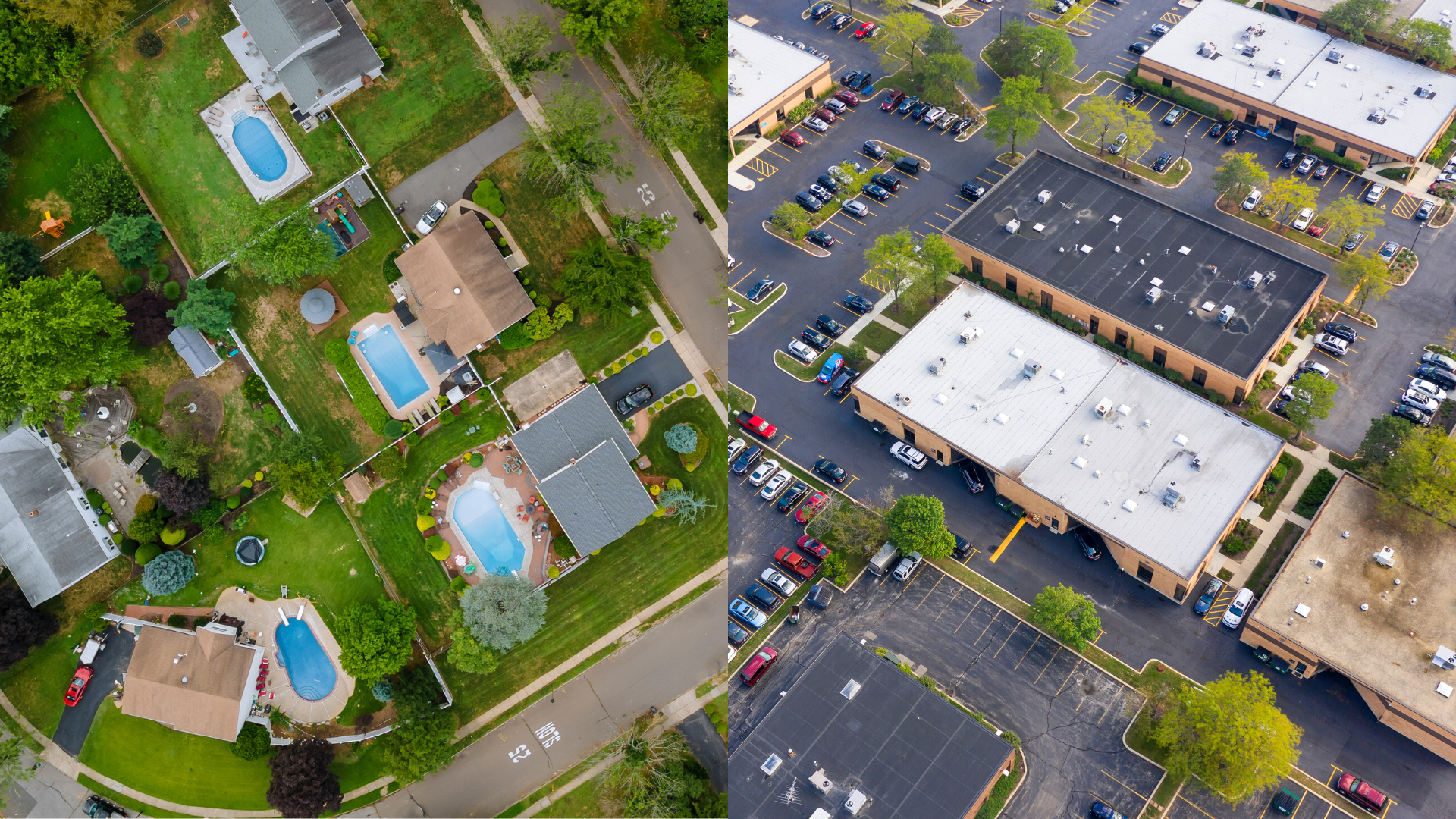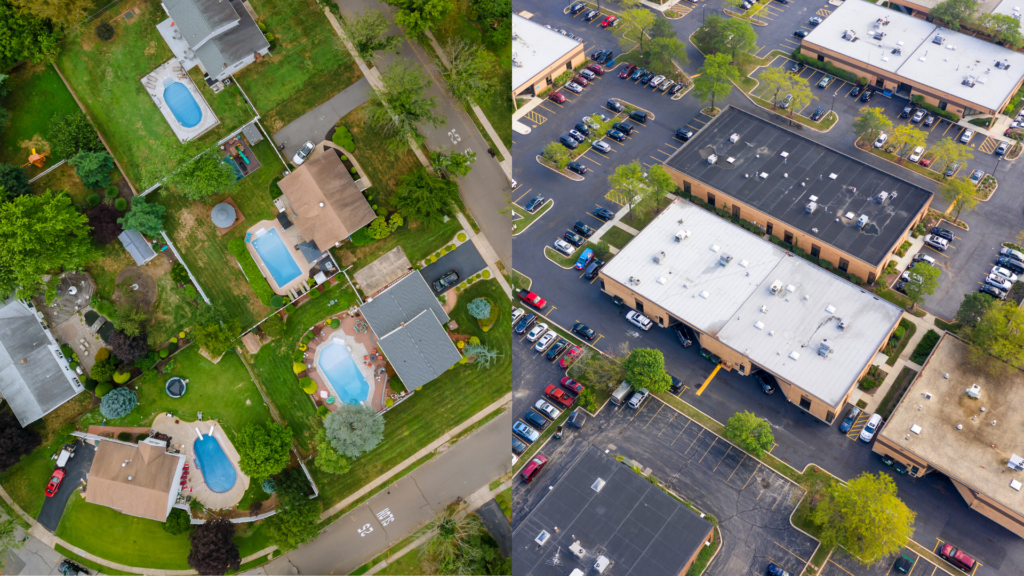
How AI Innovation Is Transforming Property Insurance Underwriting
In P&C insurance, AI is progressing from proofs of concept to operational backbone. As property insurers face mounting pressure from growing competition, rising risks, and climbing replacement costs, the question for residential and commercial underwriting operations is no longer if they should use AI but how swiftly they can leverage it to maximum effect.
Key Takeaways
- Homeowners and businesses increasingly gravitate toward P&C insurers capable of delivering highly fitted coverage based on their unique needs—putting as much as $170 billion in premium revenues in play
- Advances in generative and agentic AI, geospatial analytics, computer vision, and multisource, AI-based property condition intelligence are transforming underwriting from quote through onboarding and beyond
- These and other AI technologies can reduce inspection expenses while maintaining an accurate view of risk—ensuring policyholders get the right level of coverage and reducing persistent underinsurance
- Property insurers will increasingly need to leverage these technologies to enable a shift from reactive to preventative underwriting models that help reduce risks for both policyholder and insurer
Artificial Intelligence (AI) in Property Insurance Underwriting
Artificial intelligence (AI) refers to the application of intelligent technologies, including machine learning, computer vision, natural language processing, and automation. In property insurance, AI is increasingly leveraged to improve how carriers assess risk, underwrite policies, process claims, and prevent losses. By leveraging real-time data and advanced algorithms, AI enables faster, smarter insurance operations.
Within the P&C insurance industry, the value of AI—predictive, generative, agentic, and otherwise—is expected to reach nearly $80 billion by 2032, up from just $10 billion in 2025. As AI continues to reshape the entire insurance value chain, advances in computer vision, machine learning, geospatial analytics, and multisource property data are having a profound impact on both personal and commercial lines property underwriting.
Thanks to the bar set by digital-first brands like Netflix and Amazon, nearly 4 in 5 consumers expect personalized experiences and offerings, with large majorities considering it a key driver in brand loyalty and choice. The same is true in property insurance—especially when insurtechs and rival incumbents are always just a mouse click or finger swap away. And especially at a time when an estimated $170 billion in premium revenues are in play as policyholders actively seek more value from insurers.
As a result, AI is already a game-changer for underwriters seeking to write more business, expand into new lines or regions, improve the customer experience, price risk quickly and accurately, and deliver personalized, proactive coverage. Let’s take a closer look at how these advances are reshaping property insurance underwriting.
The Rise of AI-Powered Property Condition Intelligence
While McKinsey estimates that AI could soon unlock $1.1 trillion in annual value across insurance, including claims and fraud prevention, it’s also showing enormous promise in underwriting. In early 2025, AIG reported underwriting data collection and accuracy rates increased 15% after deploying generative AI-based platforms, for instance. Meanwhile, new forms of agentic AI enable underwriters to automate more of the earliest stages of quoting and pre-bind processes—which is especially valuable in commercial lines.
According to Capgemini, underwriters spend as much as 41% of their time on administrative and operational activities rather than underwriting. As a result, as much as 60% of broker submissions are never even reviewed, and only 25% of those that are go on to become written policies. But that’s just part of the picture. Today, putting distance between top performers and contenders means harnessing not just the right AI technologies but also the right data—case in point: AI-powered property condition intelligence like the kind developed by our team at CAPE Analytics, a Moody’s company.
Over the past few years, high-quality data on property condition, replacement costs, and other pertinent property attributes have all become widely available. This includes up-to-date intel on the condition of residential and commercial properties captured via geospatial imagery.
At the same time, the growing expense and reduced availability of inspectors have only grown more onerous. Yet, while property data becomes more valuable and accessible, the effort involved in sourcing and managing multiple data providers and synthesizing a mountain of often contradictory data inputs has grown increasingly unrealistic—especially when all too many sources merely deliver raw data instead of multi-sourced insights.
The consequences of operating with raw data or drawing the wrong conclusions from it can lead to excessive exposure when quotes are too low and premium loss when they’re unnecessarily high. In addition to lost business, it can only exacerbate already dangerous levels of underinsurance—a factor that came into sharp relief after the wildfires that ravaged Los Angeles in 2025.

As the industry leader in this space, we long ago recognized that a new approach was needed. One that entailed ingesting from a constellation of public and novel sources, including high-resolution aerial imagery—and then applying geospatial analytics, computer vision, machine learning, and other forms of advanced AI to transform this data into actionable, up-to-date insights, available on-demand or via API.
This includes current roof condition and age, wildfire risk, the presence of a backyard pool, trampoline, yard debris, or hundreds of other factors that impact risk. The proven loss-predictive power of this intelligence helps carriers and MGAs enhance traditional data sources for better modeling and stronger business results across a number of use cases, including the following.
Personal Lines Underwriting: Real-Time Risk Assessment, Instant Quoting
Today, CAPE’s Home Insurance Property Intelligence solution enables CSAA, Kin, and a majority of top US carriers to quickly and accurately price coverage based on an accurate understanding of the risk associated with millions of properties nationwide in mere moments.
This includes a Roof Age and Roof Condition Rating (RCR) that utilize computer vision to identify which homes truly require onsite inspection, thereby reducing the likelihood that the premium will need to be adjusted after the policy is already bound. It also includes risks from wildfire, hail, and wind. These and other risk signals help focus underwriting resources by surfacing complex risks with significant hazards while improving efficiency by expediting properties in good condition. They can also help agents target and write policies aligned with carrier risk appetite and identify additional segmentation for new business and renewal pricing models through price-predictive modeling.
Our Primary Property Elements solution combines all of these property insights with public records and other data sources to improve the inputs of replacement cost estimates. This AI-backed, multimodal approach addresses the root cause of replacement cost inaccuracies, such as living area estimations, which can cost carriers as much as $2 billion in lost revenue opportunity.
Small, Habitational, and Mid-Market Commercial: The Power to COPE Deeper
Commercial property underwriting has long had to contend with inconsistent policy submissions and the complexity of the properties themselves—particularly in habitational and multi-structure commercial where it’s challenging to match the buildings to appropriate policies.
Underwriters can spend hours searching imagery from Google Maps, manually geocoding building schedules, or scouring county tax assessor websites for parcel sketches to assess risk. Then there’s the task of translating and normalizing the wide range of formats and data received from agents and brokers to gain insight on construction, occupancy, protection, and exposure (COPE).
But it doesn’t need to be this way. Using solutions like our own commercial property intelligence, for example, underwriters gain visibility into loss-predictive property characteristics for accurate rating and underwriting—automating the workflows they can and efficiently underwriting the rest with human supervision. It’s estimated that AI-based automation will handle more than 70% of personal lines applications without human intervention this year, and it’s expected to reduce underwriting expenses by 45%. And there’s every reason to expect compelling economics in small, habitational, and mid-market commercial lines as well.
Available through API, Batch, or using a web application, CAPE’s commercial property intelligence delivers the best COPE data in the industry directly into the appropriate workflows, with support for human review of exceptions and more complex property types.
With our Property Mapper solution, underwriters simply enter the address for an apartment complex or other multi-structure property and automatically get an instant read on which buildings are associated with what policy, assess roof condition, and gather relevant COPE data. This enables a whole new level of cost savings and opportunities, including completely automated quote and bind workflows.
Reinventing Business Models
AI-based property intelligence also enables insurers to shift their focus from claims to preventing them from happening—potentially saving both themselves and policyholders significant amounts of money.
Under new regulations proposed or in force in states such as Alabama, Colorado, and California, for instance, insurers are required to provide discounts for mitigation efforts against damage from wildfires and wind. Using CAPE’s property condition intelligence, carriers can identify actual risk to these and other perils. Through the solution’s continuously updated change detection capabilities, they can also confirm when mitigation measures have been put in place—adding additional insurer value to policyholders.
This Is All Just the Beginning of AI in Property Insurance Underwriting
New sources of data and the ability to apply it through AI will increasingly become a significant differentiating source of insight and value for property insurers. In all its forms, AI is rapidly giving insurers the ability to launch new products and services that can make the world more insurable. Put another way: In the $1 trillion P&C insurance market, underwriters harnessing the power of AI are very likely to get ahead.
To learn how AI in property underwriting can help insurers select better risks, reduce expenses, and improve the customer experience, contact us today.
